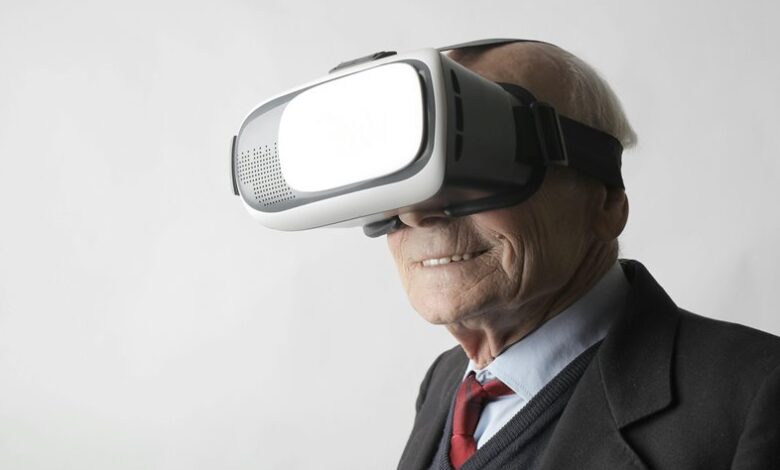
Augmented Reality (AR) and Virtual Reality (VR) represent two innovative approaches to digital interaction. While AR enhances the real world with digital overlays, VR creates immersive environments that transport users away from their surroundings. Each technology serves distinct purposes and caters to varied experiences. Understanding their differences is crucial for grasping their potential impact across various sectors. What implications do these technologies hold for the future of user engagement and interaction?
Understanding Augmented Reality
Augmented reality (AR) serves as a fascinating bridge between the digital and physical worlds, enhancing the way individuals perceive and interact with their environment.
By utilizing augmented interfaces and digital overlays, AR layers virtual elements onto reality, enabling enriched experiences.
This technology fosters a greater sense of freedom, allowing users to explore, learn, and connect with their surroundings in unprecedented ways, redefining engagement.
Understanding Virtual Reality
Virtual reality (VR) offers a uniquely immersive experience, transporting users into entirely digital environments that engage multiple senses.
This technology has found significant applications in the entertainment sector, revolutionizing gaming, films, and interactive experiences.
Immersive Experience Defined
Immersion serves as the cornerstone of the virtual reality experience, captivating users and transporting them into entirely fabricated environments. These immersive environments engage multiple senses, creating a profound sense of presence. The following table illustrates key aspects of sensory engagement in virtual reality.
| Aspect | Description |
|---|---|
| Visual Fidelity | High-resolution graphics |
| Auditory Feedback | Spatial audio effects |
| Haptic Feedback | Tactile sensations |
| Motion Tracking | Real-time movement |
| User Interaction | Dynamic responsiveness |
Applications in Entertainment
The rapid evolution of immersive technologies has led to a plethora of applications in the entertainment sector, transforming how audiences engage with narratives and experiences.
Virtual reality enhances gaming experiences by immersing players in captivating worlds, while interactive storytelling allows them to influence plot outcomes.
This shift not only deepens emotional connections but also fosters a sense of agency, redefining traditional entertainment paradigms.
Key Differences Between AR and VR
Augmented Reality (AR) and Virtual Reality (VR) represent distinct approaches to technology integration and user experience.
AR enhances the real world by overlaying digital information, while VR immerses users in entirely virtual environments, fundamentally altering their perception of reality.
Understanding these key differences reveals how each technology shapes interactions and engagement in various applications.
Technology Integration
In the realm of technology integration, augmented reality (AR) and virtual reality (VR) present distinct pathways that shape user experiences. While AR enhances reality through digital overlays, VR immerses users in entirely virtual environments. These differences influence technology adoption and digital integration strategies across various sectors.
| Feature | AR | VR |
|---|---|---|
| Interaction | Real-world integration | Complete immersion |
| Accessibility | Requires a camera-enabled device | Needs specialized headsets |
| Use Cases | Retail, education, maintenance | Gaming, simulations, training |
| Environment | Blends with physical surroundings | Completely virtual |
| User Focus | Engages with real-world context | Focuses on virtual experiences |
User Experience Dynamics
How do augmented reality (AR) and virtual reality (VR) each uniquely shape user experiences?
AR enhances the real world, promoting user engagement through interactive overlays and sensory feedback, while VR immerses users in entirely fabricated environments, offering profound escapism.
This distinction significantly affects how individuals perceive reality and interact with digital content, ultimately shaping their freedom to explore and experience diverse realities.
Applications of Augmented Reality
A multitude of industries is harnessing the transformative potential of augmented reality (AR) to enhance user experiences and streamline operations.
From retail enhancement and innovative marketing strategies to dynamic education tools, AR fosters engagement across sectors.
Healthcare applications improve patient interactions, while navigation assistance and construction visualization facilitate real-world applications.
Additionally, AR enriches gaming experiences and art integration, bridging the gap between digital and physical realms.
Applications of Virtual Reality
Transforming experiences across various fields, virtual reality (VR) immerses users in entirely simulated environments, allowing for unprecedented levels of interaction and engagement.
Its applications span therapeutic uses, training simulations, and educational tools, enhancing learning and skill development.
Industries leverage VR for architectural visualization, military training, and sports analysis, while gaming experiences, virtual tourism, and real estate showcases demonstrate its potential to redefine how individuals connect with their surroundings.
Future Trends in AR and VR
As technology continues to evolve, the future of augmented reality (AR) and virtual reality (VR) promises to reshape not only the way individuals interact with digital content but also the very fabric of everyday life.
- Future innovations will enhance human connection.
- Industry predictions suggest immersive experiences will democratize knowledge.
- Emotional engagement may redefine personal and professional landscapes.
Conclusion
In the evolving landscape of technology, the distinction between augmented reality and virtual reality reveals deeper insights into human interaction with digital realms. While AR enhances our existing environment, fostering connectivity and engagement, VR invites users into entirely new worlds, challenging perceptions and encouraging immersive experiences. As both technologies advance, their convergence may redefine creativity, learning, and social interaction, ultimately illustrating that the boundaries between reality and the digital world are increasingly blurred, reshaping our understanding of experience itself.
